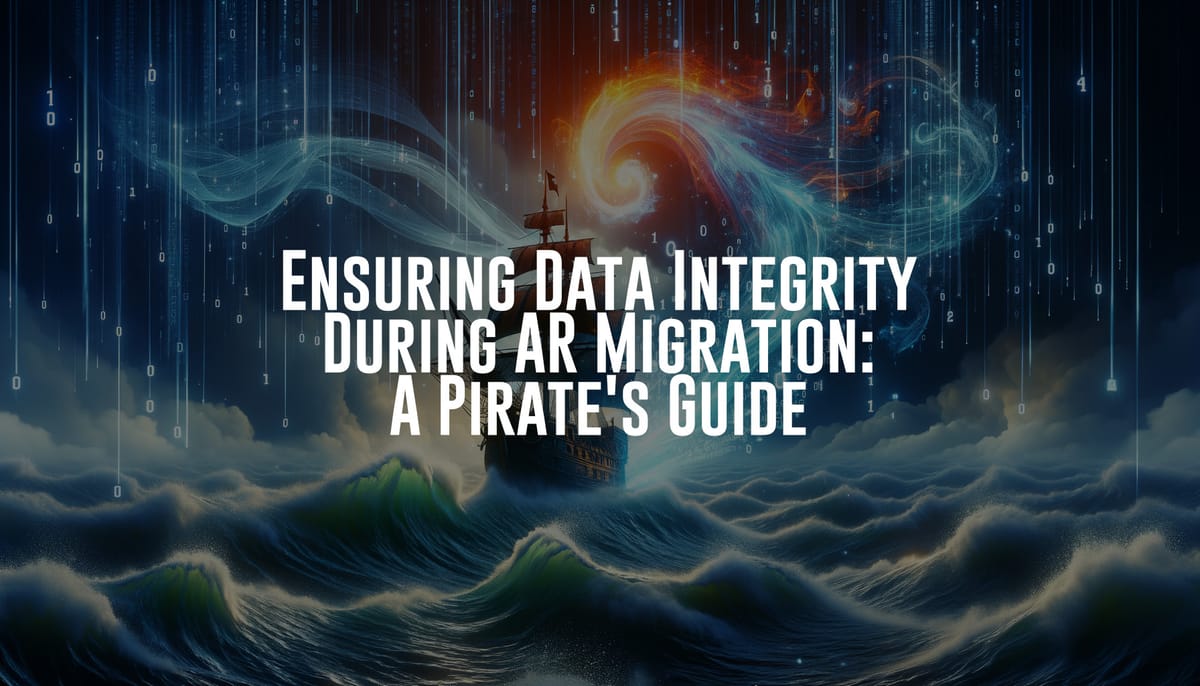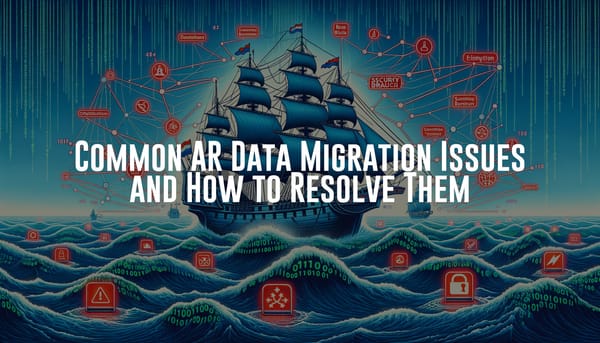Ensuring Data Integrity During AR Migration: A Pirate's Guide
Join Captain Twilight as he navigates the treacherous waters of ensuring data integrity during accounts receivable migration. Learn the mystical secrets to keep your data safe and sound.

Ahoy, me hearties! Settle in and lend me yer ears as Captain Twilight tells a tale of bravery, adventure, and the magical secrets to ensuring data integrity during accounts receivable (AR) migration. In the far reaches of the digital ocean, where data streams flow like rivers and islands of information dot the horizon, there lies a challenge that few have conquered without peril: the migration of accounts receivable data.
I. Setting the Course
Every seasoned sailor knows that setting the right course is paramount to a successful journey. The same holds true for AR migration. Begin with a thorough assessment of your current data environment. Gather your crew of IT specialists, data scientists, and financial experts to evaluate the existing AR system. Map out the data sources, types, and formats to understand the breadth of the migration task ahead. Like a pirate charting a map, document every data point, every transaction, ensuring nothing is overlooked.
II. Preparing the Ship
Once the course is set, it's time to prepare the ship for the voyage. In AR migration, this means cleansing and standardizing your data. Data that is incomplete, inconsistent, or duplicated can spell disaster for your migration efforts. Deploy your best data cleansing tools and techniques to scrub the data clean. Standardize formats and ensure consistency across all data points. This process is akin to scrubbing the decks and tightening the rigging, ensuring your vessel is seaworthy and ready for the journey ahead.
III. Charting the Data Migration Plan
With your ship in top condition, chart a detailed data migration plan. This is your navigation chart, outlining every step of the migration process. Determine the order in which data elements will be migrated, identify dependencies, and set timelines. Communicate this plan clearly to your crew, ensuring everyone understands their roles and the sequence of events. This meticulous planning will help you avoid the treacherous reefs of data loss and corruption that lurk beneath the waves.
IV. Securing the Data Cargo
In the world of pirates, securing the cargo is a matter of life and death. For data migration, this means implementing robust data security measures. Encrypt sensitive data both at rest and in transit to protect it from prying eyes. Utilize secure transfer protocols and ensure that access controls are in place to limit who can handle the data. Data integrity checks, such as checksums and hashes, should be employed to verify the data's authenticity at each stage of the migration. Think of these measures as the enchanted locks and magical seals protecting your treasure chest from theft and tampering.
V. Testing the Waters
Before embarking on the full-scale migration, it is wise to test the waters. Conduct pilot migrations with a subset of your data to identify potential issues and refine your approach. These test runs will help you gauge the effectiveness of your migration plan and give you insights into areas that may need adjustment. Like a seasoned captain testing the waters before setting sail, these preliminary trials will prevent unforeseen disasters during the main voyage.
VI. Steering Through the Migration
With the preparations complete, it's time to steer the ship through the migration itself. Execute the migration plan meticulously, monitoring each stage closely. Maintain open lines of communication with your crew to address any issues promptly. Keep an eye on the data as it flows from the old system to the new, ensuring that it arrives intact and uncorrupted. This phase requires steady hands and a vigilant eye, much like navigating a ship through stormy seas.
VII. Land Ahoy! Verification and Validation
As the data migration nears completion, the shore comes into view. But before you celebrate, conduct thorough verification and validation. Compare the migrated data with the original to ensure accuracy and completeness. Use validation scripts and tools to automate this process where possible. This step is akin to examining the treasure upon reaching an island, ensuring every gold piece and gem is accounted for.
VIII. Enhancing Data Post-Migration
Even after reaching your destination, the journey is not over. Post-migration, take steps to enhance the integrity and usability of your data. Implement data governance policies to maintain the quality of the data in the new system. Train your crew on these policies and ensure they are followed diligently. Regular audits and automated integrity checks will help maintain the treasure you've worked so hard to protect.
IX. Tales of Caution and Valor
As with any pirate adventure, there are tales of caution and valor that can be learned from those who have undertaken similar journeys. Study case studies and best practices from other organizations that have successfully migrated AR data. Learn from their successes and the perils they faced to further strengthen your approach.
X. The Captain's Final Words
In the end, ensuring data integrity during AR migration is a voyage fraught with challenges and rewards. With meticulous planning, robust security measures, and a vigilant crew, you can navigate the treacherous waters and emerge victorious. Remember, the key to success lies in the details and the dedication of your crew. So hoist the sails, set your course, and may the winds of fortune guide you to a successful AR migration.
Fair winds and following seas, me hearties! Until our next adventure, this is Captain Twilight, wishing you smooth sailing on your data migration voyage.





